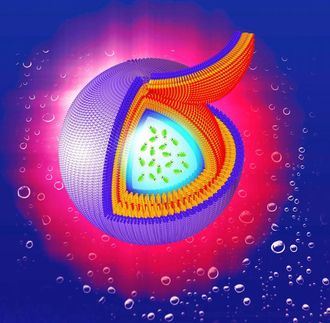Scientists discover how nanocluster contaminants increase risk of spreading
For almost half a century, scientists have struggled with plutonium contamination spreading further in groundwater than expected, increasing the risk of sickness in humans and animals. It was known nanometer sized clusters of plutonium oxide were the culprit, but no one had been able to study its structure or find a way to separate it from the groundwater.
Scientists at the U.S. Department of Energy's Argonne National Laboratory, in collaboration with researchers from the University of Notre Dame, were able to use high-energy X-rays from the Argonne Advanced Photon Source to finally discover and study the structure of plutonium nanoclusters.
"When plutonium forms into the clusters, its chemistry is completely different and no one has really been able to assess what it is, how to model it or how to separate it Argonne senior chemist Lynda Soderholm said. "People have known about and tried to understand the nanoclusters, but it was the modern analytical techniques and the APS that allowed us understand what it is."
The nanoclusters are made up of exactly 38 plutonium atoms and had almost no charge. Unlike stray plutonium ions, which carry a positive charge, they are not attracted to the electrons in plant life, minerals, etc. which stopped the ions' progression in the ground water.
Models have been based on the free-plutonium model, creating discrepancies between what is expected and reality. Soderholm said that with knowledge of the structure, scientists can now create better models to account for not only free-roaming plutonium ions, but also the nanoclusters.
The clusters also are a problem for plutonium remediation. The free ions are relatively easy to separate out from groundwater, but the clusters are difficult to remove.
"As we learn more, we will be able to model the nanoclusters and figure out how to break them apart," Soderholm said. "Once they are formed, they are very hard to get rid of."
Most read news
Organizations
Other news from the department science

Get the analytics and lab tech industry in your inbox
By submitting this form you agree that LUMITOS AG will send you the newsletter(s) selected above by email. Your data will not be passed on to third parties. Your data will be stored and processed in accordance with our data protection regulations. LUMITOS may contact you by email for the purpose of advertising or market and opinion surveys. You can revoke your consent at any time without giving reasons to LUMITOS AG, Ernst-Augustin-Str. 2, 12489 Berlin, Germany or by e-mail at revoke@lumitos.com with effect for the future. In addition, each email contains a link to unsubscribe from the corresponding newsletter.






















































